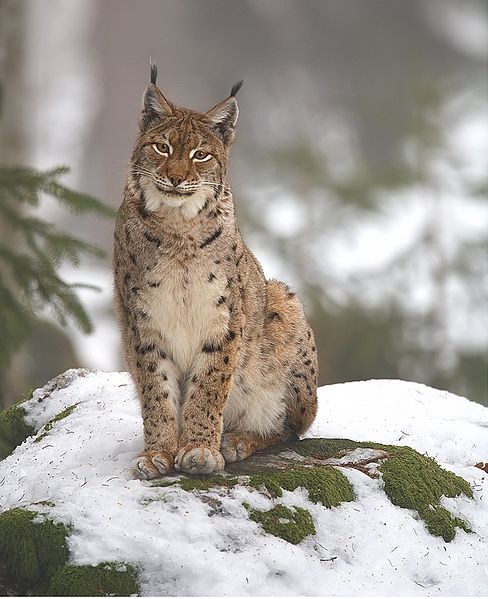Disentangling the contribution of long?term evolutionary processes and recent anthropogenic impacts to current genetic patterns of wildlife species is key to assessing genetic risks and designing conservation strategies. Eighty whole nuclear genomes and 96 mitogenomes from populations of the Eurasian lynx covering a range of conservation statuses, climatic zones and subspecies across Eurasia were used to infer the demographic history, reconstruct genetic patterns, and discuss the influence of long?term isolation and more recent human?driven changes. Results show that Eurasian lynx populations shared a common history until 100,000 years ago, when Asian and European populations started to diverge and both entered a period of continuous and widespread decline, with western populations, except Kirov (Russia), maintaining lower effective sizes than eastern populations. Population declines and increased isolation in more recent times probably drove the genetic differentiation between geographically and ecologically close westernmost European populations. By contrast, and despite the wide range of habitats covered, populations are quite homogeneous genetically across the Asian range, showing a pattern of isolation by distance and providing little genetic support for the several proposed subspecies. Mitogenomic and nuclear divergences and population declines starting during the Late Pleistocene can be mostly attributed to climatic fluctuations and early human influence, but the widespread and sustained decline since the Holocene is more probably the consequence of anthropogenic impacts which intensified in recent centuries, especially in western Europe. Genetic erosion in isolated European populations and lack of evidence for long?term isolation argue for the restoration of lost population connectivity between European and Asian poulations. informacion[at]ebd.csic.es: Lucena-Perez et al (2020). Genomic patterns in the widespread Eurasian lynx shaped by Late Quaternary climatic fluctuations and anthropogenic impacts. MOL ECOL 29(4) DOI 10.1111/mec.15366
https://onlinelibrary.wiley.com/doi/full/10.1111/mec.15366








 Las altas temperaturas están provocando que las lagunas y las marismas de Doñana pierdan agua rápidamente
Las altas temperaturas están provocando que las lagunas y las marismas de Doñana pierdan agua rápidamente



